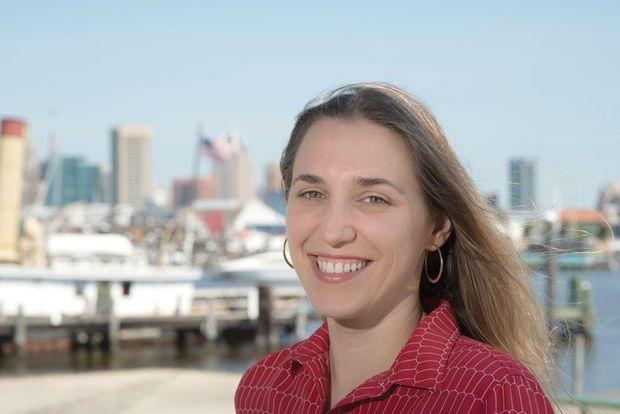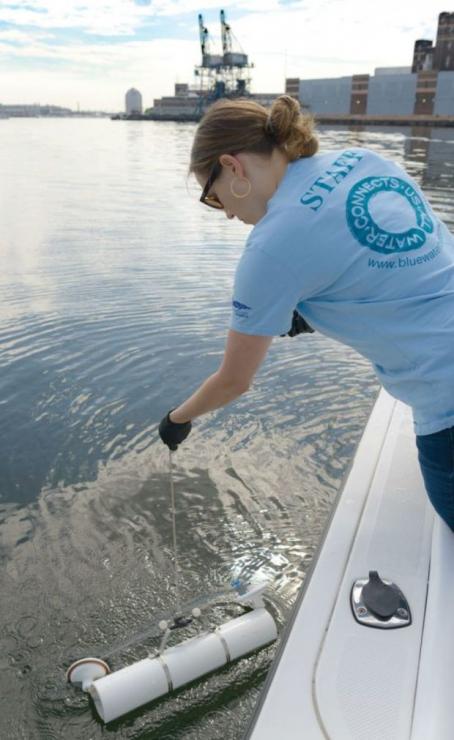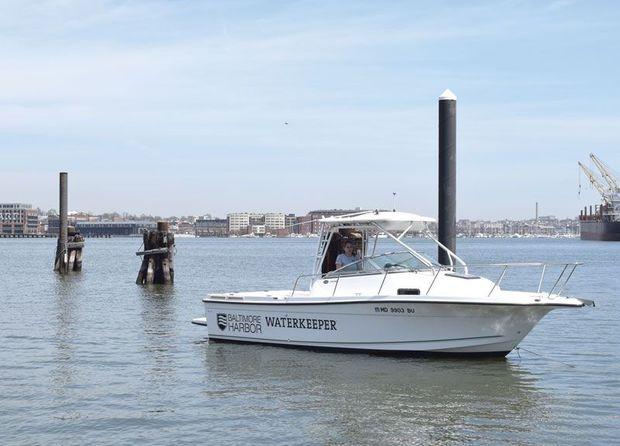Picture a Chesapeake Bay riverkeeper, and chances are you’ll envision a rugged, outdoorsy environmentalist, dressed in jeans and a fleece jacket, puttering along a scenic waterway, taking in the eye-pleasing shoreline, looking for debris and caring for scattered oyster beds.

Not Angela Haren. Haren is the waterkeeper for Baltimore Harbor. She usually dresses like a lawyer. And her part of the Patapsco—the portion that includes the Inner Harbor—is a conservation nightmare that’s teeming with sewage, stormwater runoff, toxic pollution, and trash. “The most polluted tributary to the Chesapeake Bay,” Haren says flatly. The statistics back her up. The annual pollution “report card” from the University of Maryland Center for Environmental Science gave Baltimore’s waterways a D in 2016, the lowest for any in Maryland. Her own group’s latest review rates them from D-minus to F. Moreover, Haren laments, her waterway differs from its more bucolic counterparts in another, potentially more discouraging, way: Many local residents seem resigned to the mess and are willing to accept the waterway’s conspicuous pollution as normal.
“They see pollution in the water and people say, ‘Oh, it’s been that way for a long time and nothing can be done about it,’ ” Haren says. “But it isn’t normal, and we can do something about it. We have to convince people that we can clean it up if we want to.” Such challenges haven’t fazed Haren, who grew up in environment-conscious California, went to graduate school and law school there, and has spent 12 years working for non-profit groups in Washington and San Francisco, specializing in environmental policy issues.

In her current job she spends the bulk of her time in the office or at state and federal regulatory agencies (she wears a second hat as director of advocacy for Blue Water Baltimore, the local waterkeepers’ parent organization). Haren is part of a group of 19 riverkeepers, waterkeepers, and coastkeepers on the Bay, each monitoring one or two tributaries, sampling water quality, nurturing marine life, carrying out public education programs and pushing for tighter enforcement of anti-pollution laws. Getting out on the water is both a necessity and a treat. Haren allocates time every Wednesday to help her staff scientists monitor the waterways, using the non-profit’s donated 2005 23-foot Trophy walkaround. But that’s still less than many riverkeepers in rural areas.
An outdoors enthusiast since her childhood, Haren began college as a marine ecology major but soon found she was “too much an activist at heart” to be a scientist. Instead, she switched to comparative literature to help develop her skills in writing and critical thinking. Armed with her bachelor’s degree, she went on to earn a master of public policy from the University of California at Los Angeles and a law degree (in environmental law) from Golden Gate University in San Francisco. Her resume since has been shaped by her post-graduate training. She’s served as a program director for the California Coastkeeper Alliance; worked for a federal magistrate judge and the state attorney general’s natural resources department; and represented environmental groups. Before taking the Baltimore Harbor waterkeeper job last January, she was a partner at Clear Resource Law, a firm she co-founded that specializes in providing legal and policymaking services for environmental projects. Haren’s job history has included enough time on the water tending to various environmental projects to give Haren the practical experience she’s needed to function as a program director, but it’s still a relatively small part of her workweek.

Her typical day includes lots of time on the road driving to Annapolis and Washington for meetings, several hours on the phone, and “more time than I’d like in front of a computer.” She also works with volunteers, who help monitor the waterways and win public support. Now 38, Haren has learned how to balance her day between her waterkeeper’s job and spending time with her husband, professional photographer Damon Meledones, and their two-year-old son, a feat that often involves taking home paperwork to finish late at night. That leaves little time for hobbies—in her case, cooking, traveling, hiking, and exploring—that were easier to fit in during her California days. She’s also an avid reader, a throwback to her days as a literature student.
In line with the challenges she faces, Haren has drawn up an agenda that many of the 18 other waterkeepers on the Bay might well view as daunting. Over the next several years, she hopes to boost the organization’s water-quality monitoring program, press city officials to upgrade the area’s crumbling sewerage system, reduce trash pollution (particularly from polystyrene foam food-packaging), and curb stormwater runoff. Finally, Haren wants to change public perceptions so Baltimore-area residents no longer accept the current levels of trash and pollution as normal and irreversible. That’s a tall order for any waterkeeper. In Haren’s waterways, it’s decidedly ambitious.
The Baltimore Harbor waterkeeper’s jurisdiction includes portions of the Patapsco River: the Inner Harbor, Back River, Jones Falls, Gwynns Falls, and Herring Run.
About the Author: Art Pine is a Coast Guard-licensed captain and a longtime sailor and powerboater on the Chesapeake Bay.